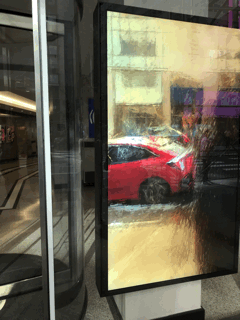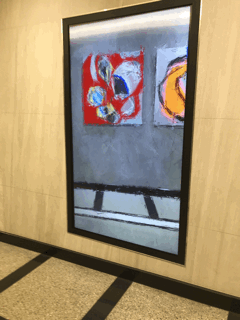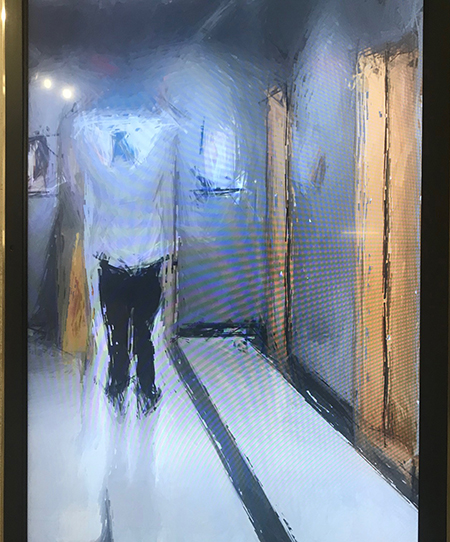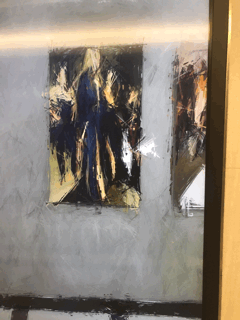Eye Candy (22)
By:
October 8, 2019
The delirious visual overload that is Times Square encourages your eye — and you — to speed up and skip around like a stone, never settling on one image or in one place for too long as there are so many others vying for your attention. However, we are well-advised to slow down sometimes, even right there in the heart of it. Because there is an interactive exhibit at street level that will reflect you back to yourself — but only if you slow down enough to see it.
“Software Mirror” (2018) by Daniel Rozin is an installation of several life-sized vertical screens at 10 Times Square, one on the street and several in the lobby. The screens continually draw and redraw what is in front of them, creating a pleasing “pencil sketch” representation of the surrounding space. But there is a catch, which is also the key to the experience: in the constantly re-sketched image, only things moving slowly enough will be drawn in enough detail to see. So if you walk by the screen quickly, you will be invisible, and it will only show the parked cars and the building across the street. You might walk right by and miss it. But if a slight flicker catches your eye and causes you to slow down, or better, stop to watch, the screen will draw you. If you move the sketch erases you, while stopping includes you back in. To capture your selfie you must slow down.
Inside the lobby of the building, which has been converted to a small gallery with rotating exhibits, one of the screens is positioned at the elevator bay. This produces the startling effect that whenever the elevators open and discharge their commuters, they are all instantly erased; only if one of them stops to check a message, or must pause and wait for the doors to open again, does the screen show that they were there at all.
Daniel Rozin is an artist and industrial designer who teaches at NYU’s Tisch School of of the Arts. From his website:
“As an interactive artist Rozin creates installations and sculptures that have the unique ability to change and respond to the presence and point of view of the viewer. In many cases the viewer becomes the contents of the piece and in others the viewer is invited to take an active role in the creation of the piece.”
Daniel Rozin portfolio site
10 Times Square gallery
Daniel Rozin at bitforms gallery
WIRED video profile: “How This Guy Makes Amazing Mechanical Mirrors”






